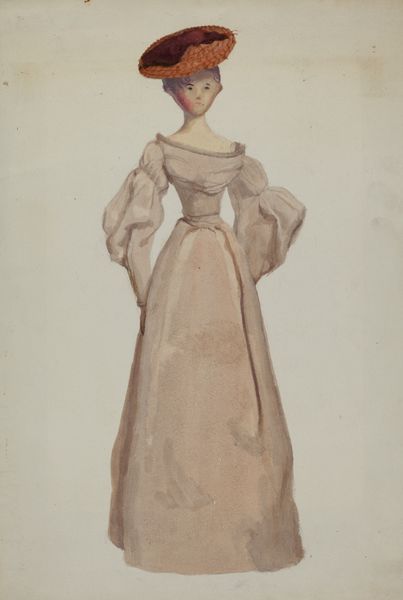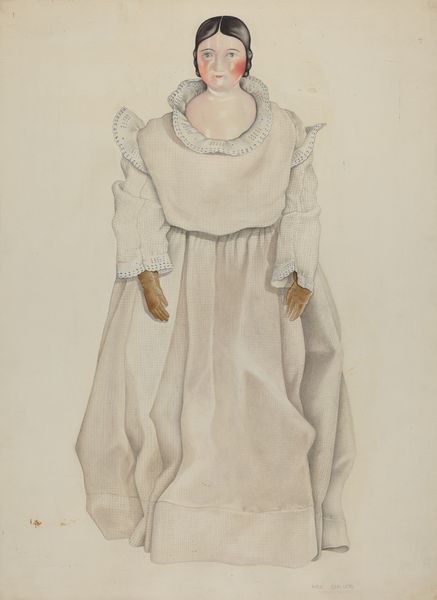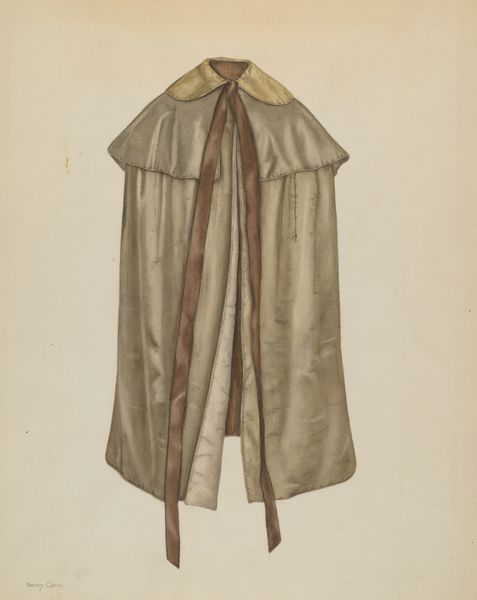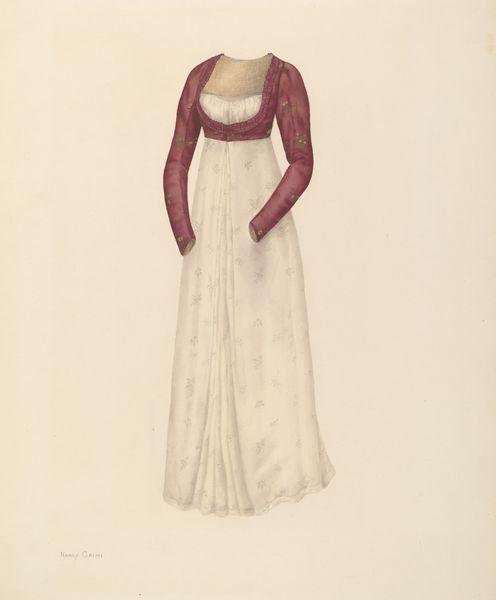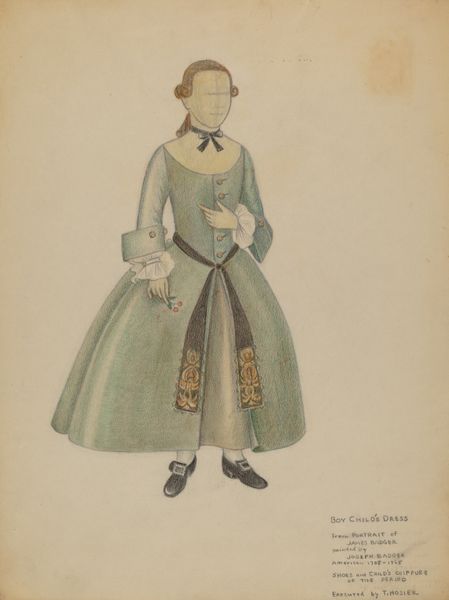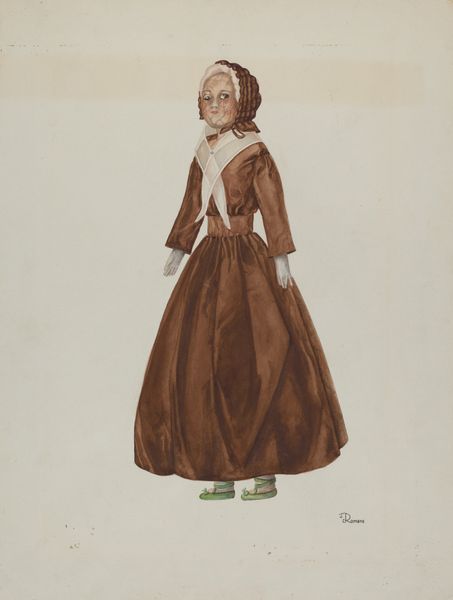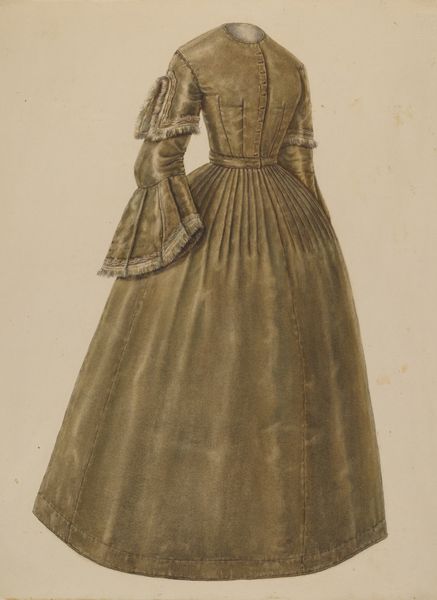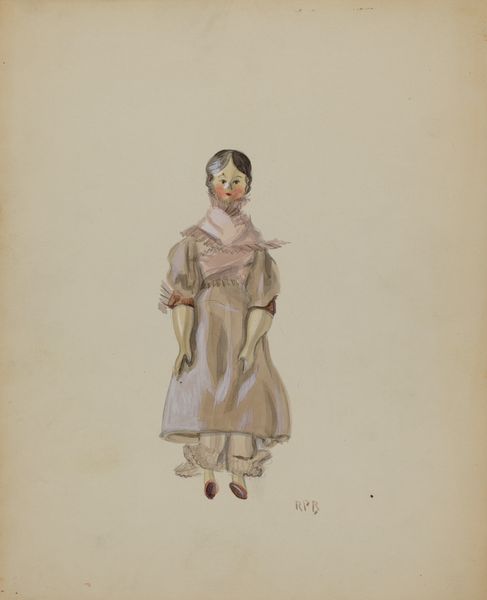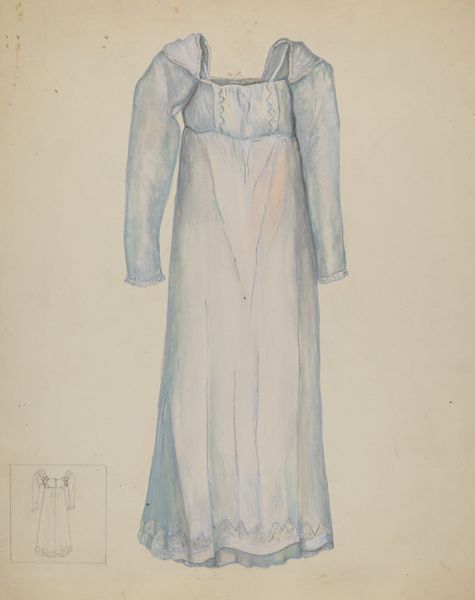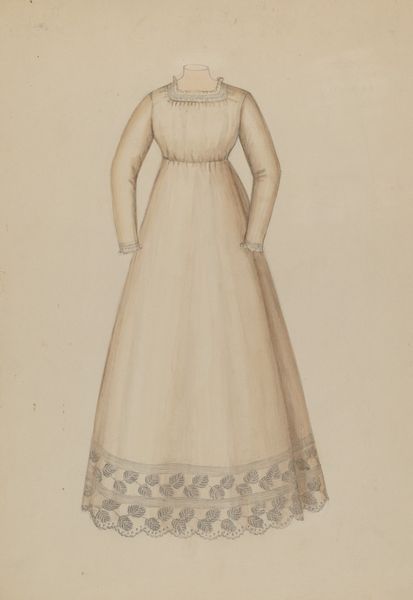
drawing, acrylic-paint, paper, watercolor, graphite
#
portrait
#
drawing
#
acrylic-paint
#
figuration
#
paper
#
watercolor
#
graphite
#
graphite
#
modernism
#
watercolor
#
clothing design
Dimensions: overall: 47.1 x 36.8 cm (18 9/16 x 14 1/2 in.)
Copyright: National Gallery of Art: CC0 1.0
Curator: This watercolor and graphite rendering on paper is called "Man's Top Coat," created around 1940 by Henry De Wolfe. Editor: It strikes me immediately as quite ghostly, even forlorn. The pale coat seems to hang there, almost without a body inside. Curator: It's interesting you say that. I see a presence, a specific era evoked. Consider the double-breasted cut and the fur collar—visual signifiers of a particular kind of mid-century masculine identity. Editor: Absolutely, the coat functions as a shell, doesn't it? I’m fascinated by the way De Wolfe uses such delicate, almost translucent washes of color to create form. Note the contrast between the soft coat and more assertive angles of the collar, and the hard lines of the button. Curator: That tension in technique mirrors a broader societal push-and-pull during that period. A striving for structure versus an undercurrent of vulnerability, even fear, related to the wartime context, perhaps? Editor: Perhaps, I see an attempt to portray a garment from a time when formality projected control. I am drawn to the interplay between precise draftsmanship and looser applications of color. Curator: Consider, too, the almost architectural nature of the coat itself. It's a structure, a layer of protection, a shield against the world. It has weight, especially with the heavy collar which gives the impression of something more substantial than what may truly exist below it all. Editor: Looking at the empty space where a head would be, it begs the question: What identity is the coat meant to convey, and who gets to wear it? Is this an idealized portrait or a critical assessment? The color usage, from umber to ivory, lends to a nostalgic aesthetic. Curator: Indeed, and seeing its cultural history is important in viewing this coat’s many purposes. Editor: A great demonstration in the power of simple form!
Comments
No comments
Be the first to comment and join the conversation on the ultimate creative platform.
